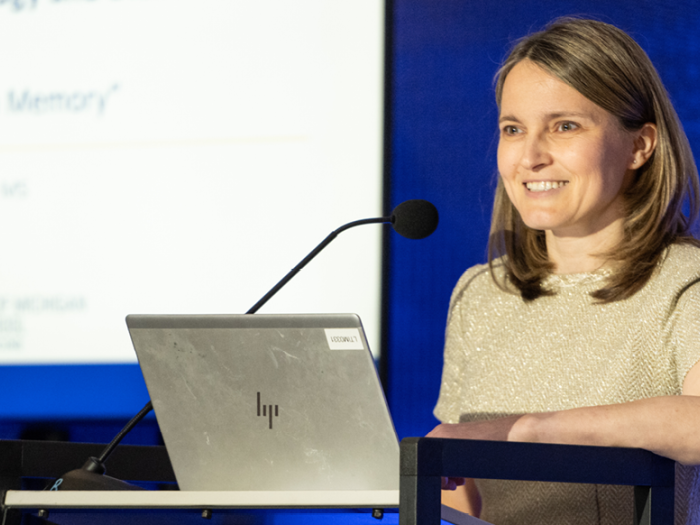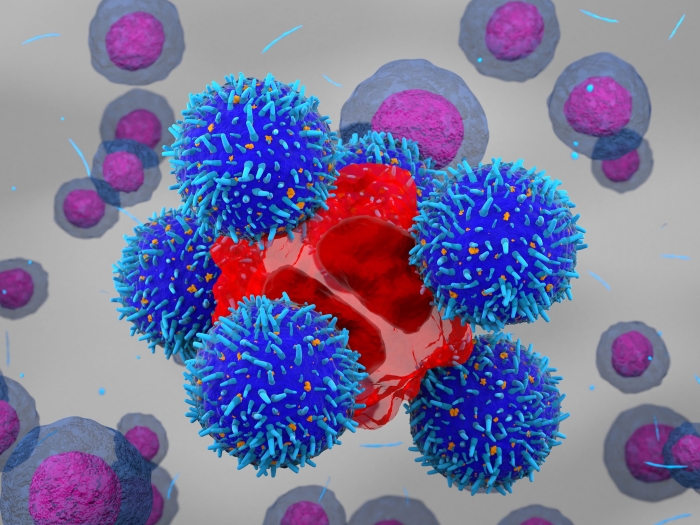
The management of voice and breathing disorders is a subspecialty of speech-language pathology (SLP).
Disorders of the voice and breathing can occur across the lifespan from infants to the elderly. The causes of voice disorders are extremely broad and may be congenital or acquired.
These include physiologic or anatomic pathology of the upper airway from underlying neurologic conditions, trauma, head/neck cancer or ineffective voice production strategies.
As we age, changes in the underlying substructure of the larynx may also result in changes to the voice. An estimated 30% of adults may experience challenges associated with a voice disorder.
The quality-of-life impact of voice disorders can result in social isolation as well as interfere with an individual’s ability to engage in their profession and avocational activities.
Breathing disorders include chronic cough and throat clearing, symptomatic shortness of breath without a primary pulmonary cause, and other functional conditions of the upper airway such as paradoxical vocal fold motion disorder, in which the vocal folds move in inappropriate ways and interfere with breathing. Prior to therapy, patients require a comprehensive examination of the larynx and other aspects of the vocal apparatus to help inform the plan of care.
The management of head and neck disorders is another subspecialty of speech-language pathology.
Head and neck SLPs typically see patients ranging in age from teens to adults. Patients are often seen in conjunction with surgeons/physicians for collaborative evaluation and individually for evaluation and treatment.
Head and neck SLPs provide individualized assessment, treatment and education for patients with diseases and or disorders of the head and neck including the following concerns:
- Head and neck cancer: nose, cheek (buccal), Lips (labia)], hard palate, soft palate/uvula, mandible, maxilla, tongue, throat (pharynx), voice box (Larynx)
- Radiation related speech and swallowing impairment
- Thyroid cancer
- Esophageal cancer
- Mediastinal tumors with tracheoesophageal involvement
- Carotid Body Tumors
- Lymphoma including cervical and mediastinal lymphadenopathy
- Recurrent laryngeal nerve injury
- Tracheal stenosis and resection
- Caustic injury
- Mucosal perforation or leak
- Oral and neck abscesses and infections
- Trismus [reduced jaw mobility/mouth opening]
- Cervical Hardware erosion of pharynx/esophagus requiring reconstruction
- Foreign body lodgment
The head and neck speech-language pathologist provides interventions in this specialty population for the following:
- Communication with a tracheostomy tube via a Passy-Muir speaking valve
- Alaryngeal communication techniques to improve verbal communication without a voice box s/p total laryngectomy
- Dysphagia (swallowing) evaluation and treatment improve the safety and efficiency of eating and drinking
- Articulation therapy – improving speech sound production for better speech intelligibility
- Voice and resonance therapy to improve hoarseness, breathiness and changes in the resonance (nasality) of the voice
- Preoperative evaluation and counseling for large reconstructive surgeries of the mouth or throat that will impair speech and swallowing function
- Prosthetic rehabilitation to improve articulation, resonance, and swallowing
- Management of tracheoesophageal voice prostheses (TEP)
Many individuals who have cancer in the larynx or pharynx can have trouble breathing and a tracheostomy tube is subsequently placed.
Tracheostomy tubes can also be placed at the time of surgery for cancer removal if swelling is anticipated, or if a patient requires support from a ventilator for a prolonged time.
A tracheostomy tube sits in the airway below the vocal cords, preventing air from reaching the vocal cords to create sound. Not only can a speaking valve help to restore communication, but there are benefits for aiding in coughing, clearing mucus, improving taste and smell, improving swallowing, and can even aid as a bridge to ventilator weaning and tracheostomy removal.
SLPs are trained to evaluate if a patient can safely wear a speaking valve.
Some individuals with cancer in the larynx or pharynx require removal of the voice box (larynx), called a total laryngectomy. The larynx is the connection between the upper and lower airways.
During surgery, a stoma is created at the base of the neck where breathing occurs and there is no longer the benefit of air filtration and humidification from the sinuses. A heat and moisture exchanger (HME) is a device that is placed at the stoma that will restore humidification, filtration and warming of the air for the lungs, in-turn reducing mucus production.
Many of these patients are also candidates for use of a tracheoesophageal voice prosthesis to restore verbal communication. SLPs work in both the inpatient and outpatient settings to troubleshoot these devices and optimize the patient’s functional status.
SLPs partner with colleagues in otolaryngology, oral-maxillofacial surgery, laryngology vocal health, as well as interdisciplinary collaboration across other medical specialties.
At Michigan Medicine, specialized care is provided at the following locations: University Hospital Speech-Language Pathology, West Ann Arbor Health Center, Brighton Center for Specialty Care and Taubman Center Otolaryngology.
Our multidisciplinary clinics include:
- Department of Otolaryngology Voice and Swallowing Clinic
- Department of Otolaryngology Vocal Heath Center
- Department of Otolaryngology Oncology Clinics
- Department of Oral Maxillary Facial Surgery and Hospital Dentistry Clinic
Additional information may be found at the following web resources:
- https://www.asha.org
- https://www.atosmedical.us
- https://www.laryngectomy.info/
- https://www.passy-muir.com
- https://www.uofmhealth.org/conditions-treatments/rehabilitation/speechlanguage
For more information about communication and swallowing disorders or to speak with a speech-language pathologist, please contact 734-763-4003.





